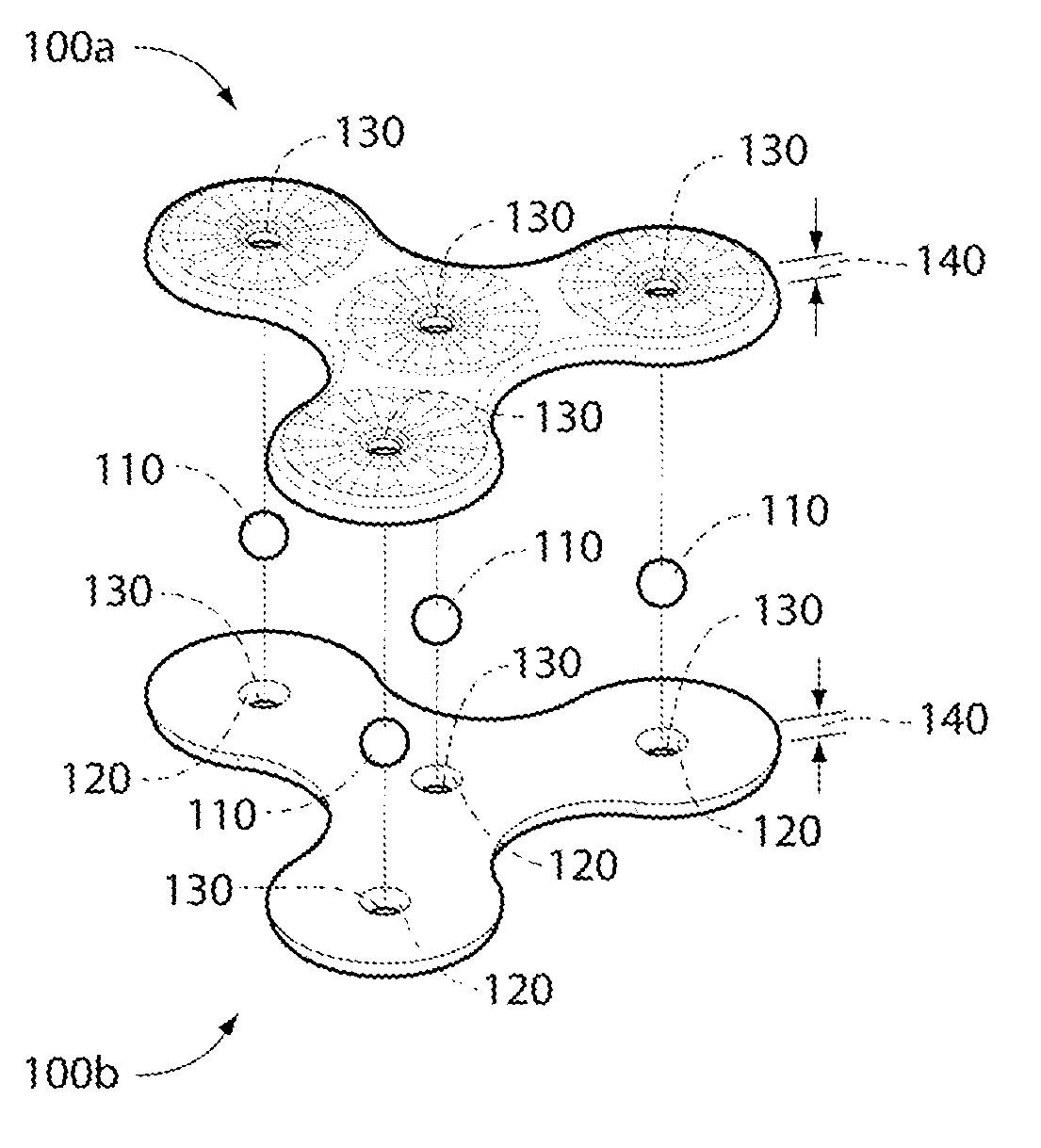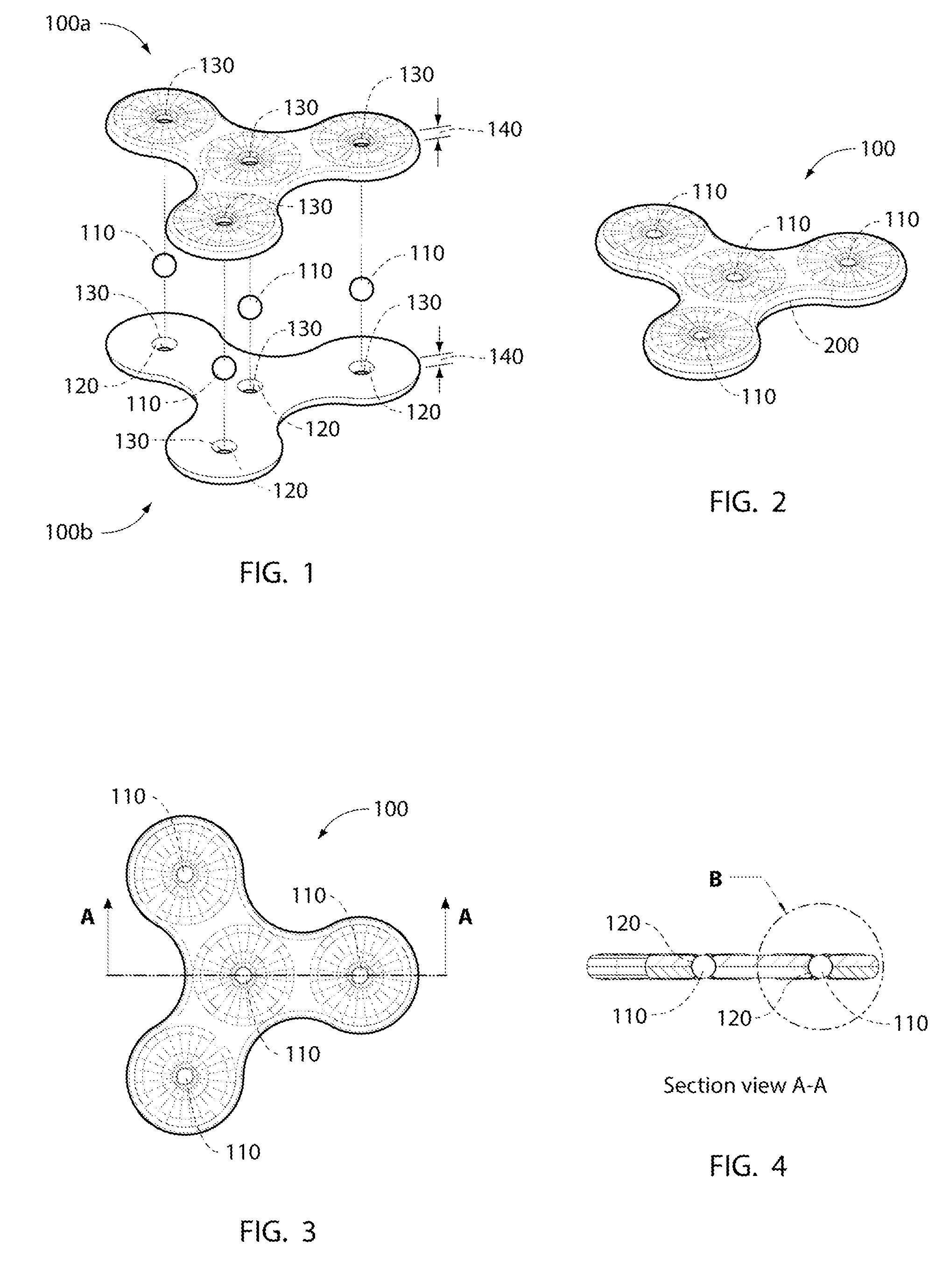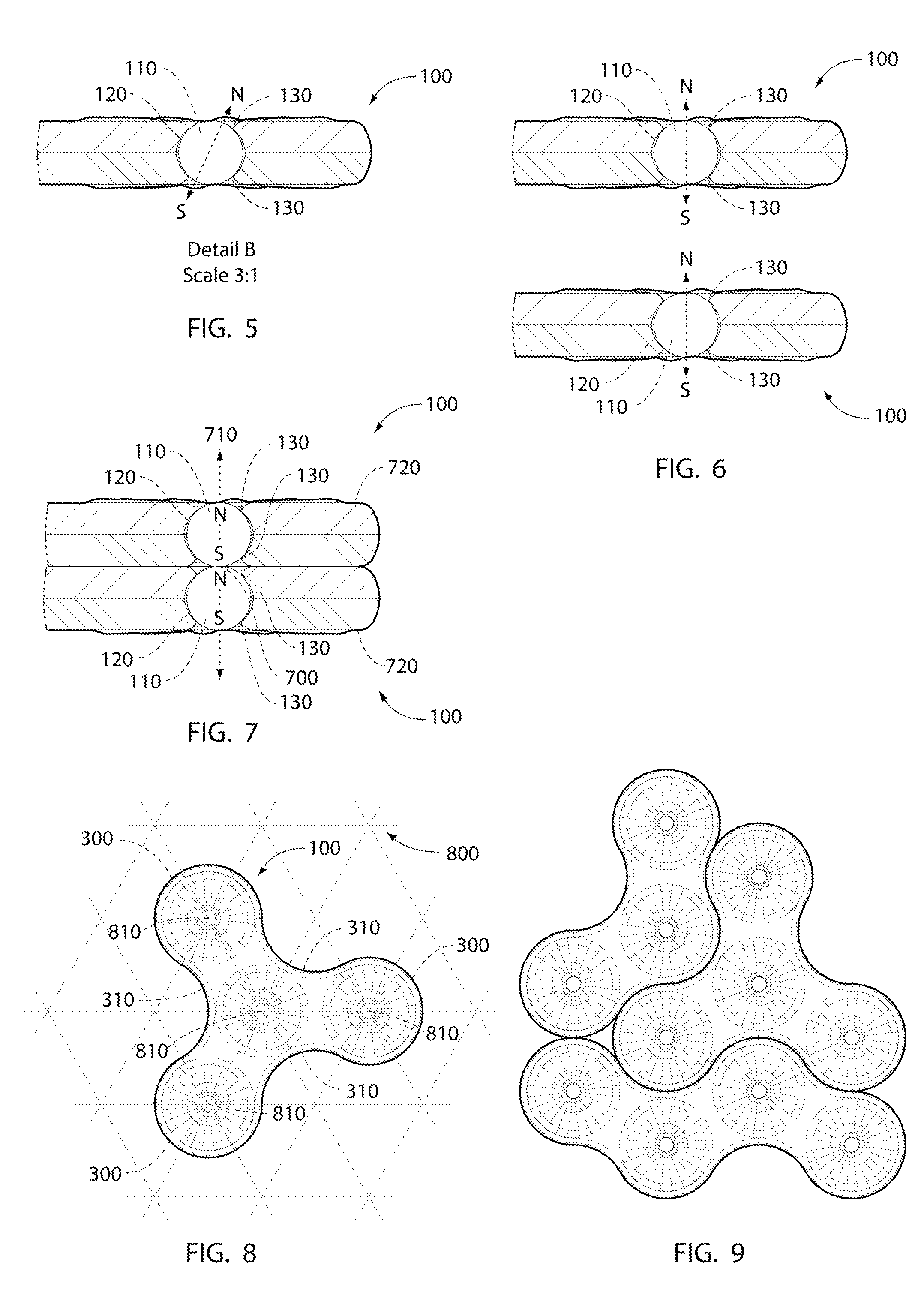Magnetic construction system and method
a construction system and magnetic technology, applied in the field of magnetic construction systems, can solve the problems of 50% of users having to flip any given piece prior to attachment, inability to remove an internal part without, and difficulty in assembly, so as to promote the ability to efficiently stack or nest structural bodies. the effect of increasing the magnetic coupling for
- Summary
- Abstract
- Description
- Claims
- Application Information
AI Technical Summary
Benefits of technology
Problems solved by technology
Method used
Image
Examples
Embodiment Construction
[0068]Embodiments of the present invention provide an architecture and method for creating a magnetic construction system including two or more structural bodies each capturing one or more partially exposed, rotatable and self-aligning magnets. The unique structural aspects of the present invention are illustrated herein via various illustrative embodiments, as will now be described in detail. The following description is presented to enable one of ordinary skill in the art to make and to use the invention, and is provided in the context of a patent application and its requirements.
[0069]Various modifications to the preferred embodiment and to the generic principles and features described herein will be readily apparent to those skilled in the art. Thus, the present invention is not intended to be limited to the embodiments shown but is to be accorded the widest scope consistent with the principles and features described herein.
[0070]FIG. 1 illustrates an exploded view of two struct...
PUM
 Login to View More
Login to View More Abstract
Description
Claims
Application Information
 Login to View More
Login to View More - R&D
- Intellectual Property
- Life Sciences
- Materials
- Tech Scout
- Unparalleled Data Quality
- Higher Quality Content
- 60% Fewer Hallucinations
Browse by: Latest US Patents, China's latest patents, Technical Efficacy Thesaurus, Application Domain, Technology Topic, Popular Technical Reports.
© 2025 PatSnap. All rights reserved.Legal|Privacy policy|Modern Slavery Act Transparency Statement|Sitemap|About US| Contact US: help@patsnap.com



